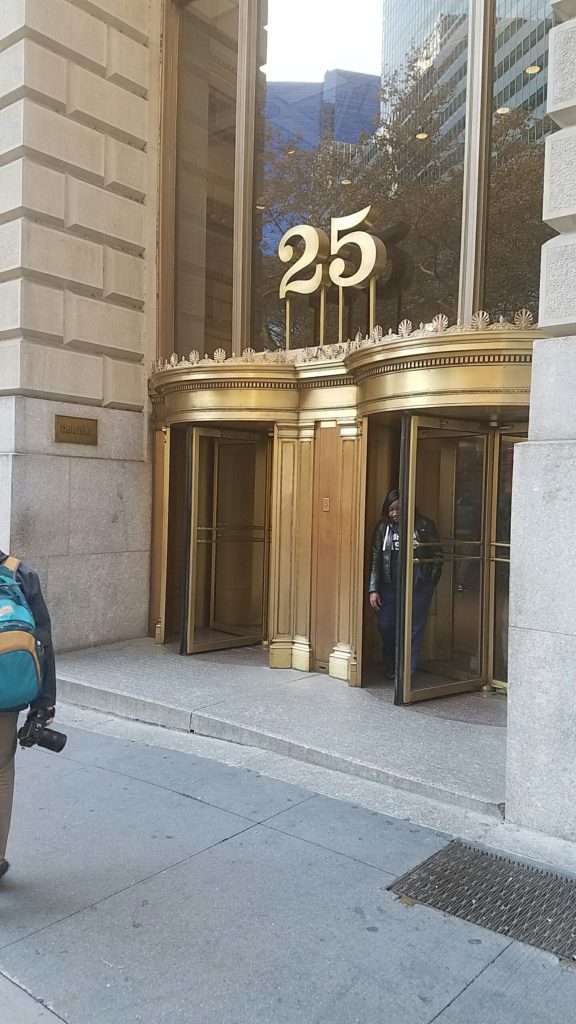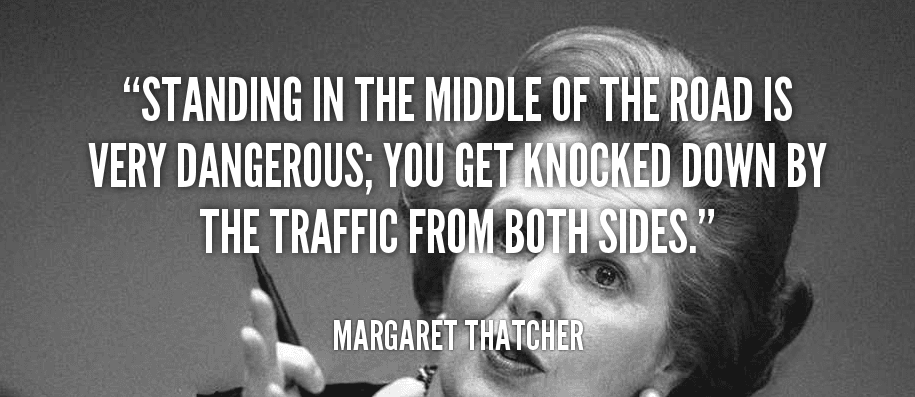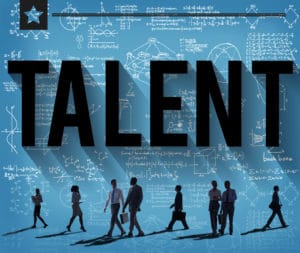by Adam L Stanley | Nov 23, 2017 | Leadership, Technology
The slippery slope of getting what we pay for
So, this blog may get me into a bit of hot water, but oh well. Here’s the deal: I wish I had the time to actually do more research, but I’ve been mulling over ideas around pricing and quality that I wanted to test with you out there in the blogosphere.
The perception bias is something that retailers continue to debate and examine in creating their pricing strategies. The theory is based on the concept of selective perception, the tendency not to notice or quickly forget something that caused emotional discomfort or that conflicted with prior beliefs. For example, a teacher may ignore bad behavior of a student because the student resembles a favorite nephew or grandchild. The teacher ignores the student’s shenanigans while punishing others that do the same things. But I’m not wading into theory – and there’s plenty of it. Instead, I want to put out my own observations, and if any of you out there have seen studies to illuminate this issue, please share.
Did I just pay $900 for a meal?
Ok, so think about the last time you or a friend went to a classy restaurant, one of those dining emporiums where dinner costs roughly the same amount as a monthly rent payment. If you don’t know anyone who’s done that, look at some of the reviews for high-end restaurants like Alinea, Next, or French Laundry on sites like Yelp or TripAdvisor – and note the prices, which are enough to destroy or whet your appetite depending on your own snack bracket (pardon the pun).
What I’ve noticed is that it’s pretty rare that anyone who goes to such a place will say anything negative about it unless it’s outrageously bad. The question is: did they really enjoy everything about the experience or is there some sort of bias at play that makes us believe that anything that costs so much has to be amazing? Same goes for expensive cars, clothes, homes, and so on.
What makes so many of us defend the quality of high-priced goods or services even when we can clearly see they don’t measure up? I think it’s got something to do with not liking to admit we made a mistake when we drop a ton on money on something. I’m labelling this blind spot the Embarrassment Bias.
So, let’s get to the point.
It cost more. It’s worth more.
This pervasive bias — where pricing obscures judgement — is also very active in the corporate world. Put it this way: the amount of straight-up honesty you get out of a team or vendor that has led a large initiative is often directly linked to the size of the budget involved. The more money spent, the less objectivity there is in the picture, no matter what the outcome.
How many executives out there have bought into an acquisition or a new product that has been sold by a team as a game changer that winds up being trashed? The fact is the team that built it invested massive amounts of money, time, and passion into the initiative – and along the way everyone lost the ability to see its real value. They become so blinded by the prestige and scope of the project, along with its high price tag, that their objectivity was blown out the window and they could no longer tell if it was meeting its original goals.
If someone designs you a souped-up ERP, for example, and it’s clearly not working for the stakeholders that need to use it — but you’ve invested tons of money and time on it — what’s a common reaction to the result? It’s mostly grin-and-bear-it positivity, which makes all attempts at real evaluation and ROI capture go out the window. Of course there are always people who knew things were going sideways, but until the bitter end will say “nothing is wrong”.
It takes great courage for teams to bust through the Embarrassment Bias and to halt massive programs underway and write them off, but there are notable stories of companies that have done just that. Think Cargill and their major write-off a few years back.
The human relationship to money, as explored here by MIT, is a twisted and complex dynamic. How we relate cost to value and quality has deep roots entangled with hierarchy and the primal idea that only the fittest will survive. As we all know, those who make the most money achieve the most power and respect, whether deserved or not. When it comes to high-stakes projects with big teams and crazy price tags, our egos, along with our deeply engrained attitudes about money, superiority, and quality (you get what you pay for) make it very difficult to stand back and clearly evaluate our performance and outcomes. And no one wants to risk embarrassment.
Check your biases at the door
Anyway, awareness is the antidote for most of our shortcomings, and it’s good to check in on our biases around pricing and quality now and again. I’m wondering though if you’ve seen the embarrassment bias at play in your own workplace? Have you ever seen a big-ticket initiative launch, then flop, and still be defended? Oh, and next time you go to a fancy restaurant, decide if you really like that foie gras!
Be well. Lead On.
Adam

Adam L. Stanley Connections Blog
Technology. Leadership. Food. Life.
AdamLStanley.com (Driving Value)
Follow me on Twitter | Connect with me on Linked In | “Like” me on Facebook
Be sure to view this related blog:
Avoid Value Destroying Arms Race
Leading Change in the Digital Era
by Adam L Stanley | Oct 2, 2017 | Leadership, Relationships, Technology, Vendors and Partners
What Makes a Great Partnership?
 The business world today is in a state of flux. New companies enter the ecosystem every day, bringing with them new technologies and business models, any one of which could transform an entire industry from the ground up. Most companies want to use this current of change to drive innovation. But the magic bullet is elusive as ever — the question is how best to drive innovation. For many, acquisition seems the only path to take through these disruptive forces of change. But I’d argue there is a different and more flexible way forward: PARTNERSHIP.
The business world today is in a state of flux. New companies enter the ecosystem every day, bringing with them new technologies and business models, any one of which could transform an entire industry from the ground up. Most companies want to use this current of change to drive innovation. But the magic bullet is elusive as ever — the question is how best to drive innovation. For many, acquisition seems the only path to take through these disruptive forces of change. But I’d argue there is a different and more flexible way forward: PARTNERSHIP.
Partners help a large organization pivot and adapt in today’s constantly changing business environment. Great outside partners help navigate rapidly changing waters. Those partners could include universities whose research expertise can be leveraged into game-changing R&D, accelerators that can source bleeding-edge innovations from all around the world, and agile startups that can experiment nimbly with new processes and ideas. By collaborating with smart organizations of all sizes, corporations drive productivity gains both for their customers and for their own professionals. It’s a win-win for all parties.
So how do you build a successful partnership? Still no magic bullet and I am by no means saying I’m the best at this. However, based on my experience forging partnerships with startups, tech accelerators, universities, and more, here are four elements I believe are essential:
Mutual benefit
In a good partnership, both partners should gain, emerging from the relationship better than they were before. To ensure this, it’s vital to define all parties’ goals clearly and upfront. According to a KPMG study, some of the most common goals for startups partnering with corporates are gaining access to the market (65%), raising capital (54%) or taking advantage of economies of scale (54%). Meanwhile universities pursuing outside partnerships may be seeking funding to replace public and government sources that have dried up in recent years. You’ll never know what any particular partner wants to get out of the relationship, though, unless you ask—every relationship is different.
Corporations should do some soul-searching too and figure out what their strategic objectives for the partnership are beyond broadly promoting innovation. What unmet client needs will your partner help address? How will the partnership augment your company’s own internal resources and processes? Great partnerships are based on a solid business case, not irrational impulse.
Trust
True partnerships depend on trust and faith, not just carefully worded contracts. You and your partner will be engaging with each other at a deeper level than a simple vendor/customer relationship, and that means you won’t just share goals and objectives but common values, too. Don’t hold back that deeper bond with too much red tape. As a 2016 Imaginatik/MassChallenge report on the state of startup/corporate collaboration puts it: “Lengthy up-front negotiations over IP concerns, access to talent, and expected time commitments may protect against exposure, but almost always lead to gridlock and failure.” Though it is important to define the terms of the relationship up front, a great partnership shouldn’t be micromanaged. Mutual understanding and trust should be your guide.
Evolution
 This goes hand-in-hand with the trust element. You can never know at the beginning exactly how the relationship will develop—it continues to evolve as you and your partner learn more about each other. Many corporations will need to adapt their processes to suit the needs of their partners over time. For instance, some experts suggest creating special “fast-track” versions of processes like procurement and invoices specifically for startup partners, which often need to move faster than the large organizations with which you might be used to working. By contrast, university academic research often proceeds at a slower pace than corporations are used to. A study published in MIT Sloan Review suggests corporate partners define a specific timescale for each university engagement with an eye to encouraging more long-term instead of short-term involvement. Overall, the key is: adapt, adapt, adapt. You’ve invested in this partner, so do what it takes to make the relationship work for you.
This goes hand-in-hand with the trust element. You can never know at the beginning exactly how the relationship will develop—it continues to evolve as you and your partner learn more about each other. Many corporations will need to adapt their processes to suit the needs of their partners over time. For instance, some experts suggest creating special “fast-track” versions of processes like procurement and invoices specifically for startup partners, which often need to move faster than the large organizations with which you might be used to working. By contrast, university academic research often proceeds at a slower pace than corporations are used to. A study published in MIT Sloan Review suggests corporate partners define a specific timescale for each university engagement with an eye to encouraging more long-term instead of short-term involvement. Overall, the key is: adapt, adapt, adapt. You’ve invested in this partner, so do what it takes to make the relationship work for you.
Rough spots
No matter how successful your partnership ends up being, you will have down days that cause you to question the relationship. That’s okay—that is part of the process. Heck, I certainly don’t know of a perfect personal relationship and a corporate/startup partnership is completely optional for both parties. Leverage some of that trust and faith to talk through issues with your partner and brainstorm possible solutions. Do they need more access to mentors and advocates in your organization? Closer connections to clients? Faster turnaround on invoicing? Do what you can to make it happen.
It’s possible, of course, that the problems go deeper than that. Sometimes, a rough spot turns into a series of rough spots, which then turns into a sense that neither partner is getting the things out of this relationship that they wanted. That’s okay, too. Partnerships don’t have to last forever to be worthwhile—they can be for a season. Just remember to end things with your former partner on good terms: you never know when you might want to collaborate with them again in the future.
There’s no way around it: building great partnerships takes a lot of time and effort. When it’s done right, however, the results speak for themselves. Partnerships are probably the most effective way a large organization can drive innovation and adapt to today’s changing tech landscape—getting there just takes a bit of dedication and faith.
Be well. Lead On.
Adam

Adam L. Stanley Connections Blog
Technology. Leadership. Food. Life.
AdamLStanley.com
Follow me on Twitter | Connect with me on Linked In | “Like” me on Facebook
Be sure to view all of my Top Traits series on talent:
Trait 1: Hard working AND talented
Trait 2: Pride in work product
Trait 3: Fun to work with
by Adam L Stanley | Sep 15, 2017 | Leadership, Technology
This blog first appeared on CIO.com.
What’s Darwin going to teach us about business in 2017?
 It is not the strongest of the species that survives, nor the most intelligent, but the one most responsive to change.
It is not the strongest of the species that survives, nor the most intelligent, but the one most responsive to change.
Charles Darwin (misattributed)
So it turns out most people think that Darwin never really wrote this or said it, though if you read his other works it clearly seems to fit within the realm of his general thinking.[1]
Darwin died in 1882. He was deceased before the Wright Brothers, Henry Ford, and some of the initial titans of industry came along with their landmark inventions. And yet, if you read Darwin’s writings and follow his broader patterns of thinking, there are a lot of lessons you could adopt for business in a very different time.
Adaptability is a misunderstood term
Adaptability is very important to the human condition, yes, but it’s misunderstood in a broader business context because of how we associate it with the word “agile.” A lot — A LOT! — is written about agile these days. True fact you need to embrace: absolutely no one in your business units cares about “agile methodology.” They care about how you aggregate demand, prototype rapidly to meet that demand, and make sure you are always determining what your clients need. No one cares if you’re adaptable, agile, waterfall, or straight 1950s hierarchy style. They care about whether you’re generating revenue as a result of your programs.
Don’t be a wuss
I’ve seen so many CIOs just take orders in meetings. They don’t get that “seat at the table.” Technology should absolutely be driving the innovation process in companies right now, not (a) enabling it or (b) restricting it, with path (b) being all too common. Step up and say what your side of the house can do. You may be in a room of legacy thinkers who won’t get it, so make them get it. It’ll take more than one meeting or interaction, but so much money (savings/generated) is on the table, it needs to click.
The paradox of becoming obsolete
Andy Grove, a founder of Intel, used to say that you know someone is a good manager when they make themselves obsolete in the role. (It’s true if you think about it, but that’s not what this post is about.) The same concept goes for processes. If you love the system you built like a first-born child, that’s great. It’s now time to make it obsolete. If you don’t find the holes, break it down, and build it better — someone external to your company will. That’s when the crap truly hits the fan. Figure out how to kill your systems, then build a version you’ll love even more. (And then kill that one.)
Be Archer
I love Archer. Whenever he talks about “the danger zone,” I laugh out loud. Why? Because I’d much rather talk about “the danger zone” at work than have another presentation about agile methodology. You need to live on the edge a little bit. Not in terms of professionalism — keep it real there — but in terms of, don’t stop being scared. Fear drives a lot of business, so fly that plane right into the danger zone and see how you come out of it.
Find your meerkat sentries
To look out for predators, one or more meerkats stand guard completely still. They keep watch, ready to warn others of approaching dangers. When a predator is spotted, the meerkat performing as sentry gives a warning sound, and everyone splits. When you build out the right team, they help you survive the bad times — and if you permit naysayers (you should), they will even bring up the threats before you see them. You need more meerkats.

Big doesn’t mean best
An elephant can dance but it is hard as hell to do so and there can be tons of collateral damage. The reality is the biggest players in most industries stifle competition — and thus stifle innovation. The meteoric or volcanic activity that ended Tyrannosaurus Rex’s reign opened the door for mammals to rapidly diversify and evolve into newly opened niches.[2] If you are small, be ready to pounce when the big guys start to fall. If you are big, think like a small guy. You know how Instagram beat all the existing photo giants to the digital sharing punch? They asked the right questions, solved the right problems, and had the product ready. What did the big photo companies — who were already developing tech similar to what Instagram was doing — do? They did what they always do: thought like a big company, which means an over-focus on hierarchy and checking boxes instead of solving problems and iterating. The small guy won. The ecosystem changed. It happens all the time. Be ready.
Do it like Darwin
Clearly some disagree with many of Darwin’s principles on evolution and I won’t go there. But that one “quote” of his, really more of a paraphrase, can be highly instructive if applied to your environment. Whether you are a CIO/CTO, a sales and marketing leader, in product design or even Human Resources, you can and should Do It Like Darwin. Adapt. Stand firm. Find your guards. And don’t be a victim of size.
Be well. Lead On.
Adam

Adam L. Stanley Connections Blog
Technology. Leadership. Food. Life.
AdamLStanley.com
Follow me on Twitter | Connect with me on Linked In | “Like” me on Facebook
Be sure to view all of the Top Traits:
Trait 1: Hard working AND talented
Trait 2: Pride in work product
Trait 3: Fun to work with
[1] ‘According to Darwin’s Origin of Species, it is not the most intellectual of the species that survives; it is not the strongest that survives; but the species that survives is the one that is able best to adapt and adjust to the changing environment in which it finds itself.’ (Megginson, ‘Lessons from Europe for American Business’, Southwestern Social Science Quarterly (1963) 44(1): 3-13, at p. 4.)
[2] http://www.nationalgeographic.com/science/prehistoric-world/dinosaur-extinction/

by Adam L Stanley | Sep 11, 2017 | Leadership, Life, Relationships
Between attending a conference in downtown NY and heading back to the airport, I decided to take a quick walk around. I realized it had actually been a while since I really walked around Ground Zero. Sure, I had been to see the memorial pools. But I had not really looked at the new tower. And certainly had not retraced my steps from that day.
So I did. I walked to the tower down John Street, the same way I had walked so many times before. When I worked for Deloitte, I often went to the 25 Broadway office in the mornings. I would leave there and walk to my client’s office, wherever that was at the time. In September 2001, my client was at One Seaport Plaza. Yesterday was my first visit back to that building in almost 15 years, and the first since wrapping up my project there.
I filmed the above selfie standing in front of One Seaport Plaza. It was harder than I expected.
Below are photos from my retracing of my steps. NY is as vibrant as ever and walking around you are struck by the dichotomy of everyday New York era walking around doing their thing with the tourists, many of whom seem to view the site of the terrorist attacks as a museum or monument to something that happened in the 1800s.

Deloitte at the time was in this office. I remember it being a new state of the art “dot com” office with bright colors and open spaces. The proximity to Wall Street and Battery Park made it a great place to work.

Charging Bull, which is sometimes referred to as the Wall Street Bull or the Bowling Green Bull, by Arturo Di Modica
Fifteen years later, throngs of tourists still line up to rub this guy’s head. And always rushing, New Yorkers laugh, point and sometimes frown as the gawkers wait for their turn to take the same photo millions have taken. Yet, we all get it. And many secretly harbor an inner pride of this thing that is part of the essence of “our city”, America’s city.

This iconic building is a mere shadow of what it was years ago with dozens of yellow jackets standing in front smoking and tourists snapping photo after photo. The increasingly electronic trading and massive security seem to make it less of an interest. Yet, the power that it represents has inspired hatred and protest through the years. To me, this building reminds me of a young boy named Adam who received a game called “Stock Market” as his prize for being the top seller in the 5th grade chocolate bar sale.

Federal Hall National Memorial, Wall Street, Manhattan, New York City
I’m guessing that at least half of the people that walk past this building every day and lots and lots of the tourists have no idea the significance of the building. If I’m totally honest, I will admit that I didn’t really know much about the history. And sadly the majority of what I know today comes from having just watched the musical Hamilton last week. Lol.
The building is actually a great reminder of the significance of this city to our country. This was the seat of the United States government back in the Hamilton days. The statue of George Washington in front serves as a reminder of both his significance to our founding as well as the significance of the city. For me, this brings back memories of walking from my client’s office to grab lunch at one of the many spots right around the Plaza.

George! Who would have thought that over two hundred years later we would have a black president and a black guy playing George Washington in one of the most successful musicals in modern history.

This was my view as I headed home every day. My home was at many times the Millenium Hilton and on September 11th it was the Embassy Suites. The Hilton was born the same side the tower as my office. The Embassy Suites required me to go through the tower everyday.

But it was this street, John Street, that was the focus of so many photos from that horrible day as people ran down the street to escape the Horrors of the attacks. The fact that the debris made it all the way down the street to my office is a shocking today as it was then.

I didn’t realize until yesterday that from the intersection of John Street and Broadway, the new Obelisk sculpture actually brings back memories of the towers collapsing. I do not believe that is the intent. However, the shape from this distance is very reminiscent of the plumes of debris that begin to rush down the street after each towers fell.

I cannot look at this Memorial, both of the pools, without having a very painful reaction. I become both sad and still a bit angry. And I still think that one day I will look through every single name and find someone that I never knew was in the building that day. A former classmate or colleague. At the same time, I find myself having very detached thoughts. For instance, the team that manages the memorial site places white roses on the names of individuals who perished, on their birthdays, as a tribute. I found myself surprised that only 4 people had birthdays the day I took this photo. Of circa 3000 souls who perished, only 4 of them shared this November birthday.

The new building is beautiful and majestic for sure. But it is still strange to see in this place. I still look up and remember the two tall white buildings that once stood where the pool is now run eternally.
Edit
I walked through this pedway hundreds of times, the start of my 20 minutes walk to my office. If connected the buildings of World Financial Center, where Deloitte also had offices, to the World Trade Center site. The Embassy Suites hotel was in this area, and my home for a while. I abandoned several shirts and suits in the hotel, as the smoke and debris damage to a building prohibited our return for several weeks. Eventually, we received a letter saying that we could return and retrieve items but it would be at our own risk. Neither the hotel or the insurance company would take responsibility for any health issues that arose. Needless to say, I took a pass and if there is anything positive that came out of the tragedy, it was a bit of a wardrobe refresh.

The day of the attacks, the South Tower lean towards the Millenium Hotel, almost menacingly. The fact that the hotel was not completely destroyed is actually quite amazing. It reopened almost two years after the tragedy. The significance of the hotel to me is that it had been my home for several weeks, including the week my dad came to visit me in August, 2001. My dad was perhaps the most nervous before he heard from me that day. He knew exactly how close I lodged and worked to WTC.

Before H&M became the go to spot for cheap, disposable clothing, I had Century 21. Socks, belts, t-shirts, oh my. Strangely, seeing this place again was perhaps most impact fully. It reminded me of just how normal that week started. How everyone started that Tuesday just as they had perhaps started the day prior. A quick trip to the store to grab something before heading to work. Or perhaps someone said to themselves, “I will stop by Century 21 on the way home.” But they never made it to the department store just across the street from WTC. They never made it home.
And that hits me hard.
Be well. Lead On.
Adam
Related Posts:
Related Posts:
Remembering 9/11 – 15 years later (2016)
Remembering 9/11/01 – My Morning in Lower Manhattan (2011)
Remembering the kindness of strangers – September 11 (2014)
Retracing My Steps (2017)

Adam L. Stanley Connections Blog
Technology. Leadership. Food. Life.
AdamLStanley.com
Follow me on Twitter | Connect with me on Linked In | “Like” me on Facebook

by Adam L Stanley | May 4, 2017 | Leadership, Quotes and Inspiration, Relationships, Teamwork
Be in it to win it or leave the race.
Nothing good comes from being in the middle of the road. It’s funny we often take for granted little things that have overarching meanings in our everyday life. Take driving. Learning the rules of the road and using them keeps us and others safe while sending a clear message about the direction we’re traveling. What happens when we forget these rules? Ever seen the person flying onto an on ramp and merging into traffic without signaling? Or the person who wants to straddle the line on a thin dual-direction road? On the road and in life one thing is clear: you cannot both be coming and going at the same time. We can do either but the rules of the road force us to make a choice.
And in our career, what happens when we refuse to choose? Many believe we can straddle the professional line without anyone noticing. With one foot in our current role and the other waiting for the next best thing, we remain unaware that our ambivalence reeks.
It is important that we pick a side.
PICK A STRUGGLE
Adam wrote a blog a while back that was titled Don’t Miss your Bernie moment. The message was in general for leaders of organizations that have gone through major periods of change. The Bernie message was one of transition. It was saying to his supporters that the time has come to move on, united against a common evil, and rally together on a new shared mission. That blog was for leaders at the top of newly merged or fundamentally changed organizations. And it should absolutely resonate for many of you out there.
But there is another message and this is for everyone in the organization under such leaders. And the message is basically that once a leader has articulated the new shared vision for the organization you have a decision to make. Either align with that leader and support the mission, helping to drive the continued success of the organization. Or decide that this mission is simply not yours and move on. You need to pick a struggle. You need to pick a side. Just like being in the middle of the road while driving is not a viable option, being in the middle of the road as a member of a team is unacceptable.

Let’s be clear here. We are not at all saying that adherence to the mission of an organization requires a level of abject acceptance of any decisions that are made and any directions that are delivered. The value you bring to an organization is of course diversity of opinions and the ability to provide input into decisions driving the future of your organization. Never change that. However, there is a base level of acceptance that is required of any player on a major team.
Adam is a very big fan of Arsenal Football Club and anyone who knows the English Premier League teams knows that to some extent each team is fundamentally different than other teams. Their leaders are different and their style of play are also different. If someone joins Arsenal, the expectation is they will bring new talent, new ideas, and new strength to the club. However, they will still play under the style and direction that has been developed over dozens of years. They cannot come in and try to be a rock superstar constantly fighting against the leadership or their fellow team members. It simply does not work.
So, you’re at a Crossroads. You joined the company and you worked for a particular leader for years. You respected that leader and admired his or her vision for the future of the company. You now have been placed under a new leader and you dislike your new mission.
It is time to decide.
Our advice for you:
1) Consider what makes you happy at work. Be very honest and open with yourself. Be sure that you are not letting personal friendships or biases get in the way of sound judgment. I have worked for people who are fantastic people that I truly respected and I liked. But they were not always aligned with me strategically or going in the direction that I actually thought was best for our company.
2) Ask lots of questions and truly get to know the new leader. If you suspect there is a fundamental misalignment with your view of strategic direction for the company, do your research. List out your perceived differences and ask questions that get to a point where you can confirm one way or the other. You may actually be surprised both at your misunderstanding of the misalignment or in your leader’s interest and ability to change based on strong feedback
3) Check the grass on the other side. Research other players in your industry and see if they are going in a fundamentally different direction. It could be that your ideas are not aligned with the way the world is shifting. You could be the one on the wrong side of the road. And hey, we’ve all been wrong sometimes. This exploration of the other side will also help you and your decision to stay or leave for another company. If, after all, other companies in your industry will be going in the same direction, you might be left all alone.
 4) Change your way of thinking. Adam wrote a blog on Allies on a Tour of Duty, about investing in talent for the long-term. The concept there was around each role being a different opportunity for you to build on particular skills and learn new ones. Never considering that any would be permanent. Change your way of thinking so that this new strategic direction under this new leader is another Tour of Duty. It’s an opportunity for you to prove that your intellect and your skills are transferable and can be applied under different fields of battle.
4) Change your way of thinking. Adam wrote a blog on Allies on a Tour of Duty, about investing in talent for the long-term. The concept there was around each role being a different opportunity for you to build on particular skills and learn new ones. Never considering that any would be permanent. Change your way of thinking so that this new strategic direction under this new leader is another Tour of Duty. It’s an opportunity for you to prove that your intellect and your skills are transferable and can be applied under different fields of battle.
5) Determine your time horizon. There is a particular amount of time that you will wait it out and try to make it work before one of two things happens. Either you will become so despondent and disengaged that you will be miserable at work and miserable to work with. Or, your performance will suffer and your contributions will decline and instead of leaving on a high you will leave with an impression a failure. When not happy at work, your performance will suffer and your reputation can as well.
6) Just Leave. If you’ve come to the conclusion that it’s simply not going to work or you don’t want it to then you should do yourself and the organization a favor and respectfully exit. Fortunately, we are not tied to any one company and where we decide to work is a choice. Choose to be solid teammate and manager, productive and most of all happy…elsewhere.
Choose Your Side
Staying in the middle of the road is not good for any players involved. Your leadership will be disappointed in your performance and your attitude. Your peers will notice your lack of Engagement. And those that do not know you well will brand that as part of your personality and your skill set. And you will be unhappy and feel increasingly disengaged and alone. That is a position that no one wants to be in at work. Therefore, we encourage you to pick a struggle. Pick a side.
Let us know what you think. Have you been in a situation where your colleague was clearly straddling the middle line? Have you managed someone like that?
Be well. Lead On.
Adam
This blog was coauthored with Apriel Biggs-Coker. These are our views and not necessarily those of the company.

Adam L. Stanley Connections Blog
Technology. Leadership. Food. Life.
AdamLStanley.com
Follow me on Twitter | Connect with me on Linked In | “Like” me on Facebook

by Adam L Stanley | Mar 21, 2017 | Leadership, Technology
My #Soapbox: Finding Talent Today
 Technology has made many things about our lives better. As a geeky, technology evangelizing, digital dude, I would say technology has made MOST things better. We have quicker communication (sometimes I wish this was not the case). Some work processes are more effective (sadly not all). We can keep costs down in businesses. Scale happens faster. Connections with clients are richer. Analytics more powerful in decision making. And technology has touched essentially every industry. Customer demand shifts, competition from just about everywhere, and an increasingly challenging operational and regulatory environment mean that every company, from the most “manual” to the most high tech are all in essence technology companies. Every business is a technology business now.
Technology has made many things about our lives better. As a geeky, technology evangelizing, digital dude, I would say technology has made MOST things better. We have quicker communication (sometimes I wish this was not the case). Some work processes are more effective (sadly not all). We can keep costs down in businesses. Scale happens faster. Connections with clients are richer. Analytics more powerful in decision making. And technology has touched essentially every industry. Customer demand shifts, competition from just about everywhere, and an increasingly challenging operational and regulatory environment mean that every company, from the most “manual” to the most high tech are all in essence technology companies. Every business is a technology business now.
One issue, though: technology doesn’t seem to have made recruiting that much better. And, unfortunately, in many companies talent acquisition does not seem to have caught up with the skills that modern businesses need. CIOs out there: How many of your wish lists from your teams still include lots of “old skills”?
Many companies still hire a lot off of competence metrics. Just peruse a list of openings on LinkedIn and dozens of them still list long bullets that would have been on job descriptions 10 years ago: where you went to school, what you studied, years of experience, how much you know about x or y. Makes perfect sense and may not change anytime soon for a lot of our roles. But competence is becoming overrated as a hiring driving force. We live in a VUCA business environment — volatile, uncertain, complex, ambiguous — and technology has allowed executives to open up revenue streams they never thought possible. Priorities and objectives can switch on a dime in some companies. We don’t necessarily need the most competent financial guy in history; we need a financial guy who can switch between different approaches as it’s called for.
In short: less bullet points, more real people with curiosity and skills. What skills? I have a short list and welcome your ideas.
Skills for the Digital Era
 1. Analytics: All businesses are running on data now, or trying to. Unfortunately, the talent for understanding, analyzing, and presenting data hasn’t kept up with the need for data-driven decision-making in businesses. This is hitting CEOs hard: as CIO Magazine noted, over 60 percent want to do more with data, but don’t have the right people on board. It’s 2017. Every hiring process needs to have a data analysis component somewhere. Hiring the right one can be tough.
1. Analytics: All businesses are running on data now, or trying to. Unfortunately, the talent for understanding, analyzing, and presenting data hasn’t kept up with the need for data-driven decision-making in businesses. This is hitting CEOs hard: as CIO Magazine noted, over 60 percent want to do more with data, but don’t have the right people on board. It’s 2017. Every hiring process needs to have a data analysis component somewhere. Hiring the right one can be tough.
2. Accept inevitability of artificial intelligence: It will probably take your job, or a part of your job, someday. But for now we are taking the last major Industrial Revolution and going through another one, but the new one is compressed into the life span of a dog. You can’t hire people right now who have their heads in the sand about this. Maybe they don’t know how to code robots. That is fine. But they need to know this is coming and need to understand what it will mean for business models.
3. Be at least decent presenting: It’s shifting a bit with a more remote workforce, but we still get ideas/pitches across via presentations. Many people are terrible at presentations but techies tend to be even worse than normal. Not every job needs effective presentation skills, but we should be evaluating candidates based on how well they can get across an idea. If you can’t get across a simple idea or advance a concept, what value will you ultimately be to a business? Especially when, again, every business is a tech business.
 4. Understand mobile and targeting: You might think this is just for marketing roles. It’s not. The greatest promise of mobile is that you can find specific consumers literally in the palm of their hand. 2017 job candidates should understand the scale/scope of mobile, how mobile works as a targeting device, and what the hiring company’s business model could/should do with mobile. They may not drive the strategy on it, no, but if they don’t understand it, they’re going to enter the role a few steps behind. And this is not limited to consumer businesses.
4. Understand mobile and targeting: You might think this is just for marketing roles. It’s not. The greatest promise of mobile is that you can find specific consumers literally in the palm of their hand. 2017 job candidates should understand the scale/scope of mobile, how mobile works as a targeting device, and what the hiring company’s business model could/should do with mobile. They may not drive the strategy on it, no, but if they don’t understand it, they’re going to enter the role a few steps behind. And this is not limited to consumer businesses.
 5. Demonstrate intellectual curiosity: I am amazed at how many people recruiting for roles today are concerned about “job hoppers” and, perhaps related, how many companies do not encourage continuous movement within a company. IBM, despite recent financial challenges, has created a culture that encourages and almost requires regular movement. For those of you who exercise, you know that half the battle is about continuously “surprising” your muscles, switching it up so your body never gets complacent. Your brain is the same and if a company does not commit to providing you opportunities to stretch and grow it, you will get bored. So shouldn’t every interview include questions that probe intellectual curiosity? In an era where 90% of the world’s data was created in the last two years, I want people that are fascinated by change, not just accepting of it. I blogged a while ago about Hiring for Character and Values. And one of the main targets was the curious.
5. Demonstrate intellectual curiosity: I am amazed at how many people recruiting for roles today are concerned about “job hoppers” and, perhaps related, how many companies do not encourage continuous movement within a company. IBM, despite recent financial challenges, has created a culture that encourages and almost requires regular movement. For those of you who exercise, you know that half the battle is about continuously “surprising” your muscles, switching it up so your body never gets complacent. Your brain is the same and if a company does not commit to providing you opportunities to stretch and grow it, you will get bored. So shouldn’t every interview include questions that probe intellectual curiosity? In an era where 90% of the world’s data was created in the last two years, I want people that are fascinated by change, not just accepting of it. I blogged a while ago about Hiring for Character and Values. And one of the main targets was the curious.
Let me know what you think. What do you view as key to hiring in this digital era? How do you build the best teams around different types of team members?
Be well. Lead On.
Adam

Adam L. Stanley Connections Blog
Technology. Leadership. Food. Life.
AdamLStanley.com
Follow me on Twitter | Connect with me on Linked In | “Like” me on Facebook
Be sure to view all of the Top Traits:
Trait 1: Hard working AND talented
Trait 2: Pride in work product
Trait 3: Fun to work with


 The business world today is in a state of flux. New companies enter the ecosystem every day, bringing with them new technologies and business models, any one of which could transform an entire industry from the ground up. Most companies want to use this current of change to drive innovation. But the magic bullet is elusive as ever — the question is how best to drive innovation. For many, acquisition seems the only path to take through these disruptive forces of change. But I’d argue there is a different and more flexible way forward: PARTNERSHIP.
The business world today is in a state of flux. New companies enter the ecosystem every day, bringing with them new technologies and business models, any one of which could transform an entire industry from the ground up. Most companies want to use this current of change to drive innovation. But the magic bullet is elusive as ever — the question is how best to drive innovation. For many, acquisition seems the only path to take through these disruptive forces of change. But I’d argue there is a different and more flexible way forward: PARTNERSHIP. This goes hand-in-hand with the trust element. You can never know at the beginning exactly how the relationship will develop—it continues to evolve as you and your partner learn more about each other. Many corporations will need to adapt their processes to suit the needs of their partners over time. For instance, some experts suggest creating special “fast-track” versions of processes like procurement and invoices specifically for startup partners, which often need to move faster than the large organizations with which you might be used to working. By contrast, university academic research often proceeds at a slower pace than corporations are used to. A study published in
This goes hand-in-hand with the trust element. You can never know at the beginning exactly how the relationship will develop—it continues to evolve as you and your partner learn more about each other. Many corporations will need to adapt their processes to suit the needs of their partners over time. For instance, some experts suggest creating special “fast-track” versions of processes like procurement and invoices specifically for startup partners, which often need to move faster than the large organizations with which you might be used to working. By contrast, university academic research often proceeds at a slower pace than corporations are used to. A study published in 
 It is not the strongest of the species that survives, nor the most intelligent, but the one most responsive to change.
It is not the strongest of the species that survives, nor the most intelligent, but the one most responsive to change.

















 4) Change your way of thinking. Adam wrote a blog on
4) Change your way of thinking. Adam wrote a blog on 
 Technology has made many things about our lives better. As a geeky, technology evangelizing, digital dude, I would say technology has made MOST things better. We have quicker communication (sometimes I wish this was not the case). Some work processes are more effective (sadly not all). We can keep costs down in businesses. Scale happens faster. Connections with clients are richer. Analytics more powerful in decision making. And technology has touched essentially every industry. Customer demand shifts, competition from just about everywhere, and an increasingly challenging operational and regulatory environment mean that every company, from the most “manual” to the most high tech are all in essence technology companies.
Technology has made many things about our lives better. As a geeky, technology evangelizing, digital dude, I would say technology has made MOST things better. We have quicker communication (sometimes I wish this was not the case). Some work processes are more effective (sadly not all). We can keep costs down in businesses. Scale happens faster. Connections with clients are richer. Analytics more powerful in decision making. And technology has touched essentially every industry. Customer demand shifts, competition from just about everywhere, and an increasingly challenging operational and regulatory environment mean that every company, from the most “manual” to the most high tech are all in essence technology companies.  1. Analytics: All businesses are running on data now, or trying to. Unfortunately, the talent for understanding, analyzing, and presenting data
1. Analytics: All businesses are running on data now, or trying to. Unfortunately, the talent for understanding, analyzing, and presenting data  4. Understand mobile and targeting:
4. Understand mobile and targeting:  5. Demonstrate intellectual curiosity: I am amazed at how many people recruiting for roles today are concerned about “job hoppers” and, perhaps related, how many companies do not encourage continuous movement within a company. IBM, despite recent financial challenges, has created a culture that encourages and almost requires regular movement. For those of you who exercise, you know that half the battle is about continuously “surprising” your muscles, switching it up so your body never gets complacent. Your brain is the same and if a company does not commit to providing you opportunities to stretch and grow it, you will get bored. So shouldn’t every interview include questions that probe intellectual curiosity? In an era where 90% of the world’s data was created in the last two years, I want people that are fascinated by change, not just accepting of it. I blogged a while ago about
5. Demonstrate intellectual curiosity: I am amazed at how many people recruiting for roles today are concerned about “job hoppers” and, perhaps related, how many companies do not encourage continuous movement within a company. IBM, despite recent financial challenges, has created a culture that encourages and almost requires regular movement. For those of you who exercise, you know that half the battle is about continuously “surprising” your muscles, switching it up so your body never gets complacent. Your brain is the same and if a company does not commit to providing you opportunities to stretch and grow it, you will get bored. So shouldn’t every interview include questions that probe intellectual curiosity? In an era where 90% of the world’s data was created in the last two years, I want people that are fascinated by change, not just accepting of it. I blogged a while ago about